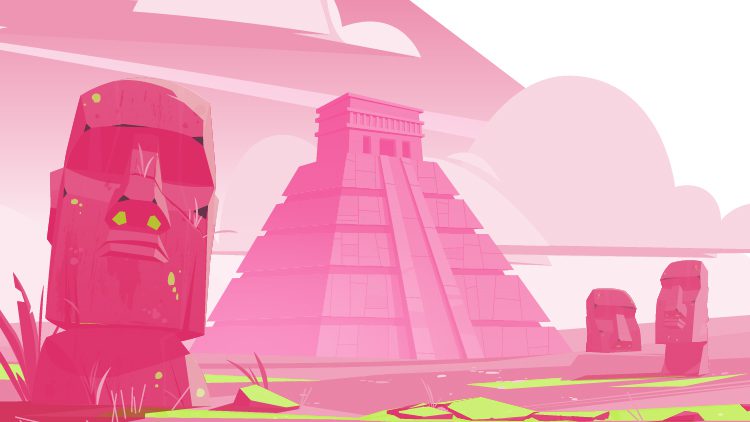
Incas of Peru
The Inca Civilization
The Inca Empire stretched from Quito (Ecuador) to Santiago, Chile. Click on the map to enlarge.
The Incas, also known as Amerindians, were an indigenous Earlier civilization of South America. They were a small tribe living in highlands in 1400AD. One hundred years later, in the early 16 century, the Incas conquered and controlled the largest empire in the Americas. This led to the creation of the great Inca Empire. Its capital was in Cusco in Peru. The empire extended from Ecuador in the North, Chile, and Bolivia in the East while being limited by the Pacific Ocean to the West. The Incas conquered vast territories through war and watchful diplomacy in less than 100 years.
The Inca Culture & Civilization, an agricultural civilization, was more than 10,000,000 strong at its peak in 1500 AD. It was a stratified, vertically organized society governed by the Inca (and his family). They had a good Cultural Heritage & shared polytheistic religion based on the worshiping of the Sun and Sapa Inca. The centrally planned economy, collection of tribute and draconian legal system, food safety and fair distribution, along with free healthcare and education, were the foundation of their economic and social success. Even without the benefit of a written system, the government was well-organized. The organization of the empire was comparable to that of Rome.
The Inca civilization developed advanced art forms like pottery, weaving techniques, and music. They were constructed without modern tools or the wheel and have survived five centuries in an earthquake-prone area. Machu Picchu, built by Inca Pachacuti in 1460AD, is an excellent example of their architectural achievements.
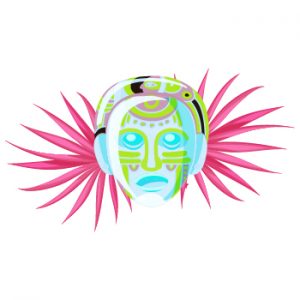
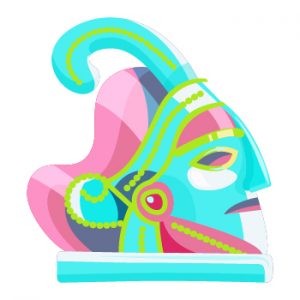
The Incas considered themselves “Inca,” meaning they were members of the group with that name. They believed they were superior to all other tribes, and being Inca was a source of pride. Only descendants of the original tribe could be considered true Inca or children of the Sun. All other subjects were subject to the Child of the Sun.
The decline in Inca territory began before the Spanish arrived. Their arrival in Peru accelerated its decline and, ultimately, its fall.
From where did the Incas originate?
The Incas’ ancestors domesticated alpacas and llamas between 3000 and 2500 BC.
Ancestors of the Incas were hunters from Asia who crossed the Bering Strait to reach Siberia. The Bering Strait, which connected Siberia to Alaska over 20,000 years ago, was used to create civilizations in the Americas. It took many thousand years for the Bering Strait to be established and populated. Many people settled along the route, building communities. Others moved southward and reached the Pacific coast of South America. They found the Andes Mountains, settling down and discovering a new way to live. They were able to grow crops such as corn and potatoes. Llamas and alpacas were the first domesticated animals. This was between 3000 BC and 2500 BC. These animals served many purposes. They were a source of food, and their wool was used to make clothing. They were also used as pack animals. They learned how to grow cotton between 3800 and 3000 BC.
The collective term Andean culture refers to the native peoples of the Andes Mountains, especially those who came under the influence of the Inca Empire. Atacama people are one example of Andean Ancient Culture. Aymara people. Muisca or Chibcha people.Around 8000 BC, preinca cultures flourished in the Andes, along the Coast; Karal (and Kotosh) are two of the first known cultures in this region.
The Incas were soon followed by Paracas, Chavin, Moche, and Tiwanaku. The Inca Civilization, the largest pre-Columbian civilization of the Americas, was created by them. They improved upon the achievements of their ancestors and dominated. The Incas explained their origins through legends. The most well-known legends are the legends of the Manco Capac, Mama Ocllo, and the Legends of the Ayar brothers.
Inca Expansion
Inca Empire Pachacutec was responsible for the expansion of the Inca Empire. He is also credited with the creation of Machu Pichu. Machu Picchu, a 15th century Inca citadel, is located in the Eastern Cordillera region of southern Peru, on a mountain ridge at 2,430 meters (7.970 feet). The Andes and Andes Mountain or Andean Highland Mountain are the longest continental mountain range anywhere in the world.
& Apu Illapu was the rain giver. This was the agricultural deity to which the common man addressed his prayers & at Agricultural Stations. The temples of Illapu were often located on high buildings. During droughts, pilgrimages to them were made, and prayers were accompanied with sacrifices. They had an even Agricultural Laboratory.
Inca Empire
The Inca Empire was a small, growing tribe from around 1200 13th Century to about 1438 the 15th Century. The Incas began expanding around 1438 when Inca Pachacutec became the king of the Inca Empire. This was the moment that the Inca civilization was established.
Without the construction of roads and bridges, their expansion and conquests of new territory would have been impossible. You must note that the Incas had high-tech engineering and architecture technology without using the wheel. At its southernmost point in central Chile, the empire was under Topa Inca Yupanqui. (Thupa ‘Inka Yupanki, 1471-93). The Spanish conquistador of the Inca Empire (also known as the Conquest of Peru) was one of the most effective campaigns in the Spanish colonization of the Americas. Spanish Conquerors, After years of military skirmishes and preliminary exploration, 168 Spanish soldiers under conquistador Francisco Pizarro and his brothers captured the Sapa Inca Atahualpa during the 1532 Battle at Cajamarca.
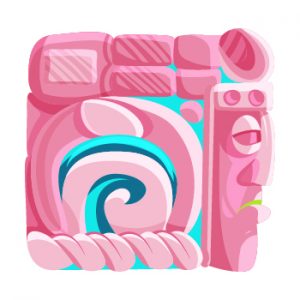
The Incas tried to establish a relationship when they arrived in a new area. They established family ties to consolidate their alliance. He gave him gifts like coca leaves, wool clothing, and mullu (shell thought to be food for Gods). They also accepted the Inca’s authority if were received the contributions. They used force to subdue any tribe that refused to accept the donations. To ensure loyalty among the people does not appear to be modifying the subject leaders. The Incas could use a more potent military force to conquer them. Learn more about the Inca expansion and government.
Peru faced difficulties in the 17th Century. These included increased contraband trading with non-Spanish merchants and attacks by Pirates. The internal decline of Spain and its decline in global power reflected some of the problems. The decline in Peru’s production of precious metals was a contributing factor to the country’s problems.
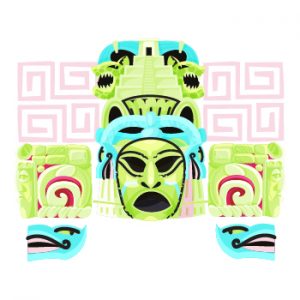
The Spaniards arrived in South America with diseases that killed the natives, making it easier to conquer an already weak empire.
Ruins in Peru tell the stories of the fallen Inca Civilization and their predecessors. Some, like Machu Picchu, were buried long before its discovery in 1911 20th Century. May hide Others Inca cities may be hidden beneath modern buildings. Is there a reason for the fall of this advanced civilization?
The invasion by the Spaniards not only brought war and disease but also brought a new culture to the area, imposing their own beliefs and government. Before the Spanish arrived at the Inca Society, disease spread from South America to Central America.
Intensifying diseases such as smallpox and flu spread from Central America to South America in just ten years. In 1527, smallpox claimed the lives of Sapa Inca Huayna Capac and Ninan Cuyochi (heir to the throne). According to Inca tradition, the next in line for the throne is the oldest son of the Inca, the Coya, and his wife. Huascar was then the next in line. Cusco’s nobility was stationed at Cusco and named Sapa Inca.
Atahualpa was one of Huayna’s many illegitimate children. He was a better warrior and administrator and was responsible for the northern territories of Quito. Atahualpa was considered the Sapa Inca by his supporters, and there was a civil war between the brothers and their supporters. Huascar was defeated in 1532, and Atahualpa became the emperor.
The Incan Society
The Incan Society was weaker and smaller as the Spanish arrived north. Francisco Pizarro arrived at Cajamarca with 110 armed men, a cavalry numbering 67 and 1532. He invited Atahualpa to his home the next day. Atahualpa knew that it would be a peaceful meeting, where foreigners would show respect for him since his entourage wasn’t armed.
When the King Of The Incas entered the square, a priest named Valverde approached him and gave him a Bible. He tried to get him to swear loyalty to the Pope or the King of Spain. Atahualpa dropped the Bible on the ground and began the pursuit to capture him. In less than 30 minutes, the conquerors captured Atahualpa. They also killed most of his warriors.
Atahualpa offered two rooms full of silver and one room of gold as a ransom for his release. Even after paying the ransom, he was not released. Instead, he was accused of treason and crimes against the Spanish government. He was executed on August 29, 1533, in the 16th Century.
The Spanish quickly advanced south, conquering and dominating the Inca territory. They also wipe out its culture and civilization and spread their religion and governance.
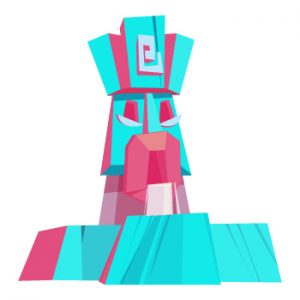
Architectural Marvels of the Incas
The Incas were master builders, creating architectural wonders that still awe modern visitors. Machu Picchu, the most famous Incan site, is a testament to their engineering prowess. Built-in the 15th century, this mountain-top citadel features precise stonework and complex terraces that demonstrate their advanced knowledge of construction and design. The site’s strategic location and its ability to remain hidden from Spanish conquerors for centuries add to its mystique and allure. Other significant structures include the fortress of SacsaBuilt-inyhuamán, with its massive stone walls that fit together so perfectly that not even a blade of grass can fit between the stones, and the city of Cusco, which served as the administrative and ceremonial heart of the empire. The Incas used a technique called ashlar masonry, where stones were meticulously cut to fit together without the use of mortar, showcasing their unparalleled skill and attention to detail. Their architecture was designed to withstand earthquakes, a common occurrence in the Andes, by using trapezoidal doors and windows that provided stability. This engineering genius is evident in the enduring nature of their constructions, many of which remain intact and functional to this day. Additionally, the Incas incorporated religious and astronomical significance into their architecture, aligning structures with celestial events and using them for ceremonial purposes.
Agriculture was the backbone of the Incan economy, and their innovative techniques allowed them to thrive in the challenging Andean environment. The Incas ingeniously adapted to their mountainous surroundings by developing terrace farming, which not only prevented soil erosion but also maximized the use of arable land. These terraces, built on steep slopes, allowed for the cultivation of crops at various altitudes, taking advantage of different microclimates. They grew a variety of crops, including potatoes, maize, quinoa, and coca, and utilized advanced irrigation systems to ensure consistent water supply to their fields. These irrigation systems included intricate networks of canals, aqueducts, and reservoirs that demonstrated their sophisticated understanding of hydraulic engineering. The Incas also practiced crop rotation and used natural fertilizers, contributing to their agricultural success and sustainability. Their knowledge of botany and agricultural techniques was so advanced that it supported a population of millions, ensuring food security and stability within the empire. Additionally, they developed storage techniques to preserve surplus crops, which were crucial for managing food supplies during times of drought or other natural disasters. The Incas’ agricultural innovations not only sustained their empire but also influenced agricultural practices in the region for centuries to come.
The Incan Road System
The Incas constructed an extensive road network, known as the Qhapaq Ñan, which spanned over 25,000 miles across their empire. This network facilitated efficient communication, transportation, and administrative control, binding together the diverse and expansive Inca territories. The roads connected various regions, from coastal deserts to high mountain passes, and included impressive suspension bridges made from natural fibers that could span wide river gorges. These bridges, which were regularly maintained by local communities, showcased the Incas’ ingenuity and communal organization. Relay runners, known as cheques, used these roads to deliver messages and goods quickly across vast distances, ensuring that the emperor could stay informed and issue orders efficiently. The road system played a crucial role in maintaining the cohesion and functionality of the sprawling Inca Empire. Additionally, the roads facilitated the movement of armies, allowing the Incas to swiftly respond to rebellions or external threats. The roads were also used for the transport of goods, facilitating trade and the distribution of resources throughout the empire. This extensive infrastructure not only supported the administrative needs of the empire but also promoted cultural exchange and integration among the diverse peoples of the Inca realm. The legacy of the Incan Road system endures today, with many sections still in use and recognized as UNESCO World Heritage sites, illustrating the enduring impact of Incan engineering and organization.
Inca Achievements
The Inca civilization, flourishing in the Andean region of South America from the 13th to the 16th century, left a lasting legacy of remarkable achievements. Among their most notable accomplishments was the development of sophisticated engineering and architectural techniques. The Incas constructed vast networks of roads and bridges, facilitating communication and trade across their expansive empire. Their architectural marvels, including the famous Machu Picchu, showcase their mastery of stone masonry and urban planning. Additionally, the Incas excelled in agriculture, utilizing innovative terracing and irrigation systems to cultivate crops in diverse climates and terrains. Their administrative prowess is evident in the establishment of a centralized government, efficient taxation system, and complex social hierarchy. Through their achievements, the Incas demonstrated a remarkable ability to adapt to and thrive in their environment, leaving behind a rich cultural heritage that continues to fascinate and inspire admiration to this day.
Governance and Daily Life
The Inca civilization, renowned for its sophisticated farming techniques and intricate political organization, thrived across the Peruvian landscapes. Inca rulers like Tupac Amaru and Túpac Inca Yupanqui played crucial roles in expanding their native lands and establishing a robust central government, supported by efficient provincial governments. Historical figures such as Capac Yupanqui, Ayar Manco, Ayar Cachi, Ayar Uchu, and Ayar Auca were instrumental in shaping the empire’s legacy.
Everyday life in Inca settlements was well-documented by scholars from institutions like Duke University Press, Oxford University Press, Cambridge University Press, and Stanford University Press. The Smithsonian Institution and Smithsonian Magazine also provide insights into the Inca’s political and military affairs. Hernando de Soto, a Spanish explorer, recorded his encounters with the Incas, highlighting their sophisticated farming methods and access to land.
The Aymara-speaking Qulla people in Upper Peru had significant interactions with the Incas, influencing their stage of life and cultural practices. Renowned historians like José Antonio have extensively studied these interactions. Academic publishers like Duke University Press, Oxford University Press, and Cambridge University Press have published comprehensive works on the Inca’s political organization and military strategies. The Inca’s central and provincial governments managed everyday life and military affairs effectively, ensuring the stability of their vast empire. These scholarly resources offer a deep understanding of how the Incas managed their extensive empire, showcasing their advanced systems of governance and the daily lives of their people.
The Inca Empire: Leaders and Legacy
The Inca Empire, spanning the majestic Peruvian landscapes, is remembered for its influential leaders and strategic military campaigns. Notable figures like Manco Capac and his consort Mama Ocllo are considered the founders of this ancient civilization, with legends tracing their origins to Lake Titicaca. Successive rulers such as Sinchi Roca, Inca Roca, Viracocha Inca, and Manco Inca Yupanqui expanded the empire’s reach, consolidating power and establishing robust provincial governments.
During the 17th century, the empire faced significant challenges, yet leaders like Tupac Yupanqui and his descendant, Túpac Amaru II, continued to defend their native lands against foreign invaders. The efforts of these rulers and their military campaigns are chronicled in works like “Historia de los Incas.” The strategic prowess of figures like Capac Yupanqui and Apu Illapu further exemplified the Inca’s sophisticated approach to governance and warfare.
Hernando de Soto, a Spanish explorer, documented his encounters with the Incas, providing valuable insights into their stage of life and the daily functioning of their society. The enduring legacy of the Inca rulers is evident in modern-day Peru, where the influence of their sophisticated political and military systems can still be observed. These leaders’ contributions to the empire’s stability and expansion have left an indelible mark on the history of Peru and the broader Andean region.
The Inca Empire’s rich history is marked by its influential rulers and their strategic governance, which ensured the stability and growth of this ancient civilization. Manco Capac, regarded as the legendary founder, laid the foundation for Inca society and its sophisticated central government. His successors, such as Sinchi Roca and Inca Roca, continued to expand the empire, establishing robust Inca settlements across the Andean region.
Huayna Capac, one of the most notable rulers, significantly extended the empire’s reach through military conquests and strategic alliances. His reign saw the consolidation of power and the enhancement of the central government, which managed the vast territories and diverse populations within the empire. The central government’s efficiency was further exemplified under leaders like Manco Inca and Inca Yupanqui, who upheld the administrative and military frameworks established by their predecessors.
The influence of these leaders on Inca society is well-documented by scholars. Works published by Duke University Press and the University of Texas Press provide comprehensive insights into the governance, culture, and daily life within the Inca Empire. Researchers like José Antonio have extensively studied these aspects, highlighting the pivotal role of the central government in maintaining societal order and facilitating the empire’s expansion.
Ayar Uchu, a significant figure in Inca mythology, represents the spiritual and cultural dimensions of the Inca civilization, further enriching the understanding of their societal structure. The central government’s ability to integrate diverse elements of Inca society under a unified administrative system contributed to the empire’s resilience and longevity.
These scholarly resources offer a deep understanding of how the Inca Empire managed its extensive territories, showcasing the advanced systems of governance and the daily lives of its people. The enduring legacy of the Inca rulers and their sophisticated political and military systems continues to influence modern-day Peru, reflecting the empire’s significant impact on the region’s history and culture. The studies by José Antonio and publications from Duke University Press and the University of Texas Press provide valuable perspectives on the complexity and achievements of Inca governance and society.
The Inca Legacy in Latin America: Preservation and Influence
The rich history of Latin America is deeply intertwined with the Inca people’s legacy, led by notable figures such as Inca Yupanqui and Manco Cápac. The arrival of Spanish invaders brought significant challenges to the indigenous civilizations, disrupting their societal structures and cultural practices. Despite these challenges, the Inca civilization, known for its advanced use of tools like the Andean sling, left a lasting impact on the region. Modern scholarship explores these complex interactions, including works published by Stanford University Press, the University of Texas Press, and the Smithsonian Institution. Publications like Smithsonian Magazine continue to highlight the resilience and contributions of the Inca people. In contemporary contexts, firms like Mark English Architects draw inspiration from the ingenuity and sustainable practices of ancient civilizations, demonstrating the enduring influence and civilization bonus of the Inca heritage in both academic and practical fields.
The Inca Legacy and Modern Inspiration
The Inca civilization, marked by leaders such as Manco Cápac, Sinchi Roca, Inca Yupanqui, and Tupac Yupanqui, achieved remarkable feats that continue to influence contemporary society. Known for their use of the Andean sling and their mastery of precious metals, these leaders established a powerful empire with a lasting civilization bonus. Despite the challenges posed by Spanish invaders, Manco Inca’s establishment of the Neo-Inca State exemplified the resilience of the Inca people. Today, the ingenuity of the Inca civilization inspires modern architects like Mark English of Mark English Architects, who incorporate sustainable and innovative practices into their designs. This enduring legacy underscores the profound impact of the Inca on both historical and contemporary advancements.
The Resilience of the Inca People and Their Legacy
The Inca people, whose civilization once thrived around the majestic Lake Titicaca, have left an indelible mark on history. Leaders like Manco Inca Yupanqui and Túpac Amaru II exemplified the resilience and resistance of indigenous people against the Spanish conquest. Manco Inca’s establishment of the Neo-Inca State highlighted their enduring struggle for autonomy, while Túpac Amaru’s legacy continued this fight for freedom. The Andean sling, a symbol of Inca ingenuity, represents their advanced military tactics. Contemporary scholarship, including works published by the University of Texas Press, continues to explore and honor the rich heritage of the Inca people, ensuring their stories and achievements are remembered and appreciated.
Frequently Asked Questions
What were the main achievements of the Incas in Peru?
The Incas of Peru achieved remarkable feats in governance, engineering, and agriculture. They established a vast empire, known for its sophisticated road systems, agricultural terraces, and administrative organization.
What was the capital city of the Inca Empire?
The capital city of the Inca Empire was Cusco, located in modern-day Peru. It served as the political, cultural, and religious center of the empire.
How did the Inca society function?
The Inca society was highly organized, with a centralized government led by an emperor. Society was divided into different social classes, and labor was organized through a system known as “mit’a.”
What was the significance of Machu Picchu in Inca civilization?
Machu Picchu was a significant Inca site, believed to have been built as an estate for the emperor Pachacuti. It served as a ceremonial and administrative center and is now recognized as one of the New Seven Wonders of the World.
What were the Incas known for?
Many things are notable about the Incas, including their sculptured rocks. Although the stones they carved look almost natural at times and appear very artificial at others, it is not difficult to see why. They were well-known for creating stunning structures and using rope bridges to move materials and messages. Chasqui, a group of people, built these rope bridges. These women and men lived in pairs, walked up to 200 meters per hour, and relayed messages from village to village.
The Incas had a complex communication system. To transmit information, they used strings (or khipu, another spelling of quipu). They were the first to use a decimal system for sending and receiving messages. This allowed them to move large quantities of people and goods quickly. Alpacas, llamas, and other domesticated animals were also highly valued. They also provided plenty of wool and leather used for food and clothing. The Incas were well-known for cultivating crops and raising chickens and guinea pigs for food.
